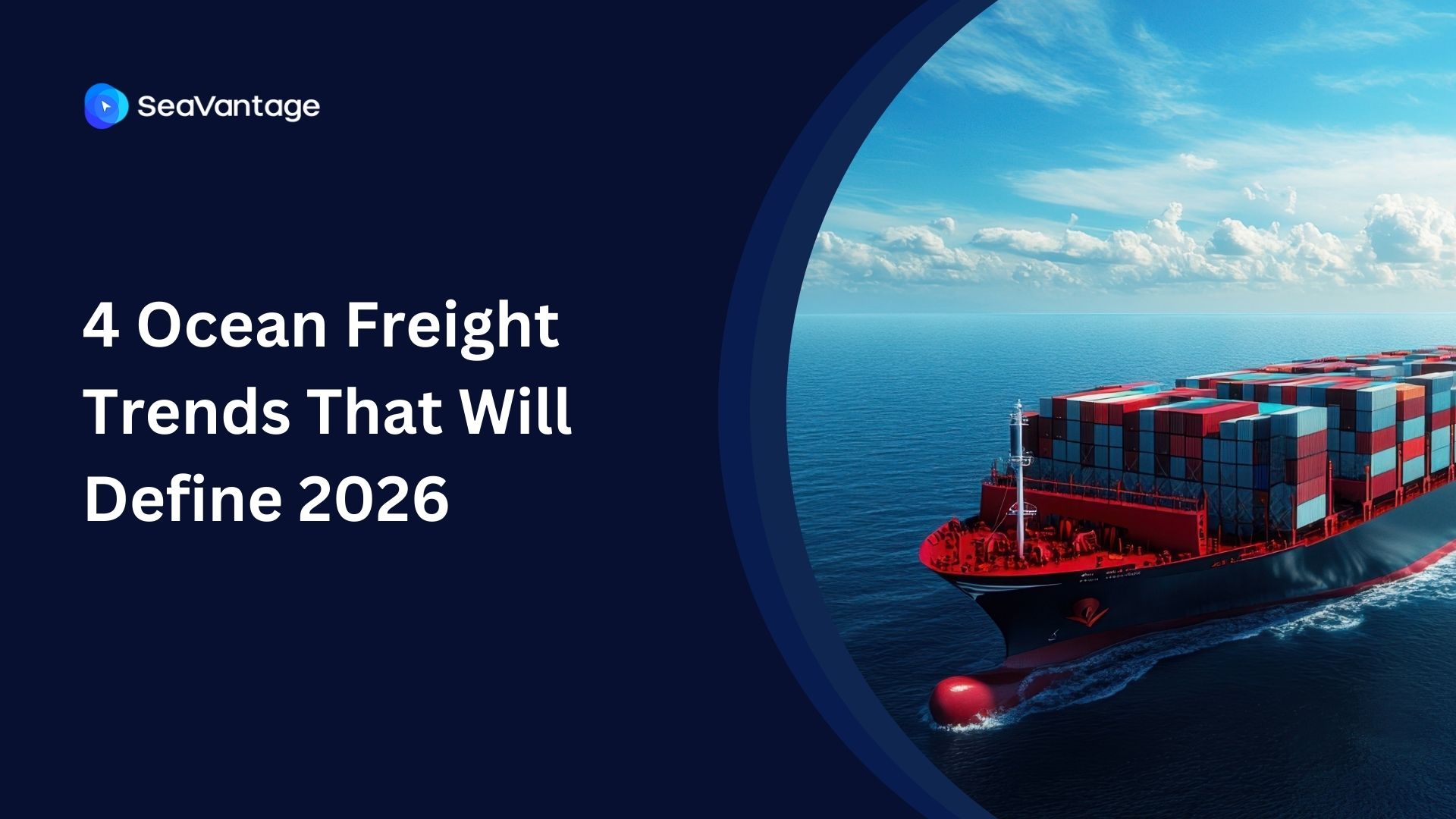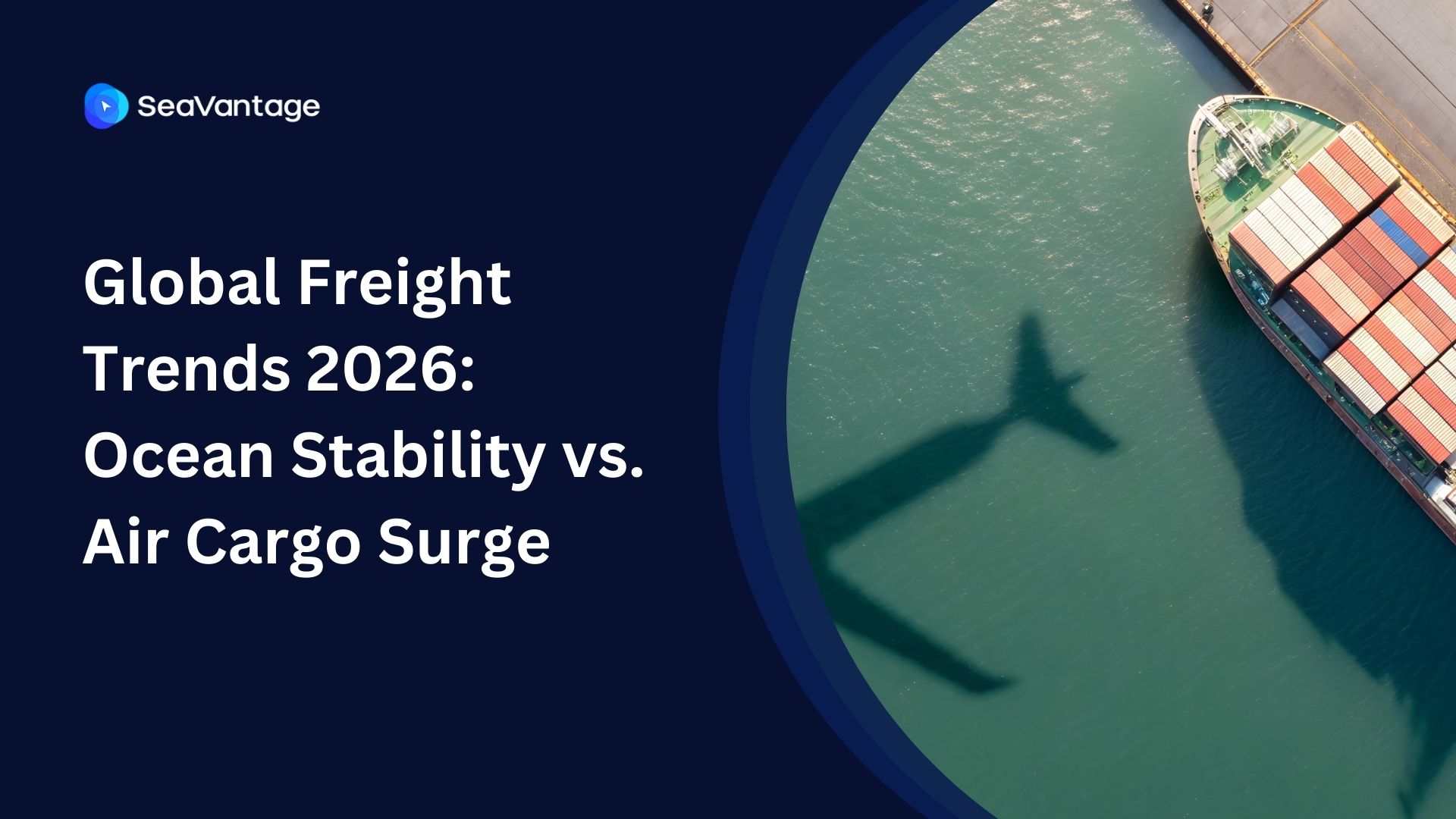AIS Data that Enables Vessel Position Tracking
If you are involved in the import/export business, you may have heard of ‘ship tracking’ or have tried tracking it yourself. Through ship location tracking, people want to know where my or my customer’s cargo is on the sea, which route it takes, where it transits, etc. And consequently, the cargo’s arrival time. In addition, ship tracking will also be able to identify cargo delays and variable situations that frequently occur in maritime transportation in advance and prepare for them so that there are no disruptions to the logistics plan.
As such, in the logistics industry, the need for a ‘supply chain visualization platform’ that can monitor cargo transportation status is continuously increasing, and this maritime transportation visualization platform is based on ‘AIS data’ that is regularly transmitted from ships. SeaVantage verifies, processes, and utilizes AIS data to increase its reliability, and analyzes global ship and port information and logistics data to help improve real-time transportation status and inefficiencies in logistics work. Now, let's explore in depth what AIS data, which is the basis for ship tracking, is; what are its characteristics? And why is data processing necessary?
What is AIS?
AIS (Automatic Identification System) is an automatic ship identification device and navigation equipment that can automatically transmit and receive information such as the ship's location, speed, course, and ship identification information through wireless communication (VHF frequency) to enhance ship navigation safety and security. AIS was developed as a tool to prevent ship collisions even in situations where a ship cannot be recognized with the naked eye. AIS identifies the location and path of other ships and allows them to identify each other. According to the International Maritime Organization’s (IMO) maritime safety act, since 2004, it has been mandatory for ships exceeding 300gt (ton) to install AIS. AIS information is transmitted to the terrestrial receiver or satellite receiver at intervals of 2 to 3 minutes depending on the moving speed.

AIS types
AIS is divided into two types: Class A and Class B.
- Class A: It satisfies the AIS mounting requirements of the International Maritime Organization (IMO) and transmits at a higher signal power and faster cycle than Class B equipment, allowing it to be received by distant ships.
- Class B: Compared to Class A, they are designed to provide only a limited number of functions, transmit at lower signal power and speed, and do not display static information about the vessel.
Applications of AIS data
- Avoid ship collisions: Communicate with other vessels to maintain a safe distance and prevent collisions.
- Port control: AIS data is collected to monitor maritime traffic and used for port control.
- Search and rescue assistance, accident investigation: It is used to support search and rescue in the event of a maritime accident.
Types of AIS data information
AIS data includes not only the ship's location information, but also static information related to the ship's specifications, dynamic information that changes in accordance to sailing conditions, and navigation information related to the sailing schedule. It is a large amount of data that receives more than tens of millions of data every day.

IMO Number (International Maritime Organization) International Maritime Organization Registration Number - This is a unique 7-digit serial number assigned to each vessel and is used for registration and tracking of the vessel.
MMSI Number (Maritime Mobile Service Identity) Maritime Mobile Service Identification Number - AIS equipment have a unique identification number that can be called a maritime phone number. The MMSI number is a 9-digit number, the first 3 digits of which represent the ship's country code.
Errors in AIS data
“Why does the ship appear to be on land?”
AIS data errors can be broadly divided into redundancy errors where a ship's unique information is duplicated, and location errors that occur due to GPS equipment errors. If an error occurs and incorrect AIS information is continuously transmitted, it may interfere with the decision-making of controllers, navigators, or companies that use the information in their work. Therefore, to utilize highly reliable AIS data, data verification and processing are necessary. We will look at the causes and examples of each factor that causes errors.
1. Duplicate Data Error or Human Error
• Situation: A situation in which a ship’s unique identification information is transmitted from two or more ships.
• Cause: Unique identification information is duplicated due to human error or intentional manipulation of information.
• Examples: When IMO and MMSI information are entered incorrectly, or when internationally sanctioned ships operate by stealing the IMO number of another ship.

2. Positioning Error
• Situation: An error occurs in the location information of AIS data.
• Cause: Temporary error or failure of GPS equipment
• Example: When the actual position of the ship is recognized incorrectly.

Data Insight
SeaVantage analyzed AIS data of more than 300,000 ships around the world and built a learning model for track data by ship type/size and holds a patent for it. Through comparison with the learning model, it automatically detects ships suspected of having AIS data errors, such as deviating from the course or receiving AIS data with the same identification number at the same time from different areas.

At SeaVantage, we create learning models through machine learning, detect anomalies in real-time, identify error factors, take corrective actions, and continuously enhance the reliability of AIS data. The processed, high-quality AIS data serves as the foundation for supply chain visibility and insight platforms needed by the logistics industry and is offered under the service name 'Data Insight.' With AIS data, users can check past and real-time information on ship routes, positions, speeds, and estimated/actual arrival times (ETA, ATA). This data can also be used alongside port data for analyzing port congestion. Additionally, it can serve as statistical and insight materials on global cargo volumes and logistics trends. A representative case is the joint production of the 'Global 70 Port Congestion Report' with KOTRA, with many companies subscribing to Data Insight to obtain necessary decision-making information.
SeaVantage's cargo insight, ship insight, and port insight are supply chain visibility solutions based on high-quality AIS data, big data analysis, and AI technology. These solutions provide reliable information necessary for decision-making to supply chain stakeholders in a timely manner and help them preemptively check and respond to variable situations in maritime transport.
2025년 9월, 주요 글로벌 항만에서 어떤 운송사가 가장 긴 선박 체류 시간을 기록했는지 확인해보세요. 트렌드를 비교하고, 지연을 파악하며, 전체 항만 데이터를 통해 운송 전략을 최적화할 수 있습니다.
2025년 8월, 주요 글로벌 항만에서 어떤 운송사가 가장 긴 선박 체류 시간을 기록했는지 확인해보세요. 트렌드를 비교하고, 지연을 파악하며, 전체 항만 데이터를 통해 운송 전략을 최적화할 수 있습니다.
2025년 7월, 주요 글로벌 항만에서 어떤 운송사가 가장 긴 선박 체류 시간을 기록했는지 확인해보세요. 트렌드를 비교하고, 지연을 파악하며, 전체 항만 데이터를 통해 운송 전략을 최적화할 수 있습니다.
iscover the 4 critical ocean freight trends for 2026, from the Red Sea reopening and fleet overcapacity to shifting global trade maps. Prepare your supply chain now.
Discover key 2026 freight market trends: Port of Houston expansion, air cargo "super peak," and ocean freight stability. Plan your supply chain with SeaVantage.
Explore November 2025 global port dwell time data. See which ports and carriers led in efficiency across Antwerp, Busan, Long Beach, Rotterdam, and Singapore.



.svg)





.jpg)

.png)